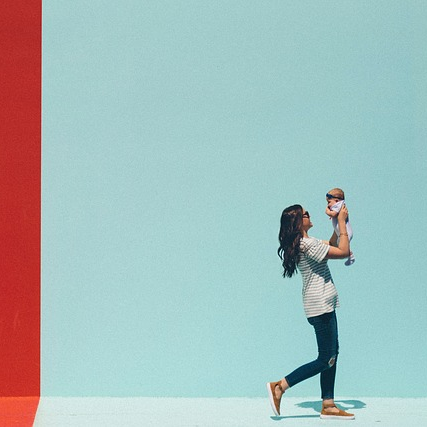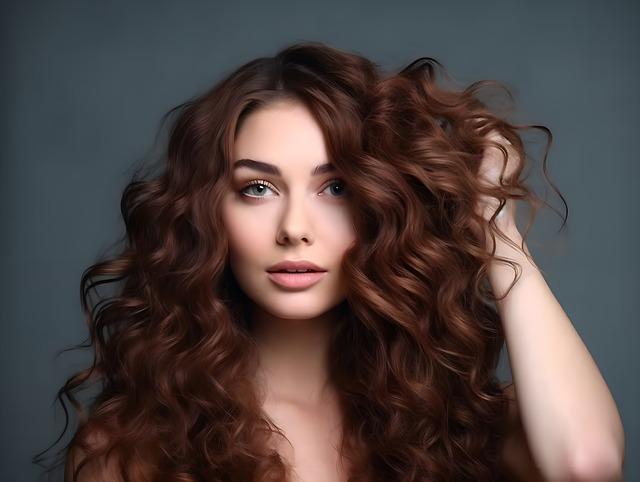Are you struggling with postpartum hair loss and searching for an effective solution? Look no further; minoxidil might just be the answer you’ve been seeking! In this blog post, you’ll discover real-life experiences, expert opinions, application tips, and potential alternatives to help you navigate the world of minoxidil for postpartum hair loss.
Key Takeaways
Experience inspiring stories of postpartum hair regrowth with minoxidil.
Healthcare professionals recognize the potential benefits and importance of seeking expert advice.
Take steps to safely apply minoxidil for optimal results, explore alternatives, and fuel your hair health!
Personal Stories: Real Experiences with Minoxidil Postpartum
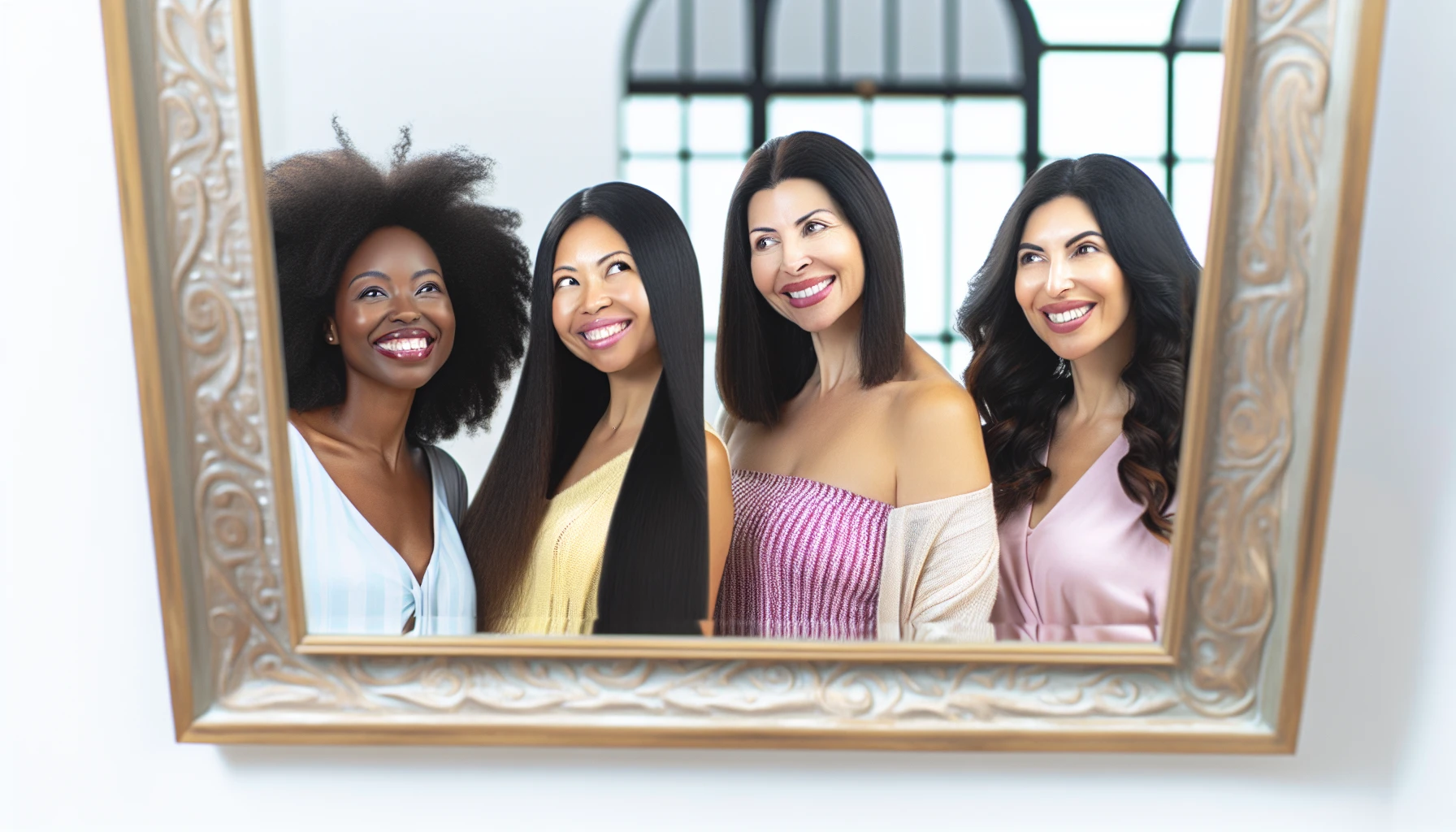
Many women have found hope in their battle against postpartum hair loss through the use of minoxidil. Imagine stepping out of the shower and not seeing clumps of hair in the drain, or running a brush through your hair without experiencing excessive shedding. These are the real-life experiences of women who have used minoxidil to treat their postpartum hair loss and witnessed remarkable hair regrowth.
One mother shared, “I was devastated by the thinning hair around my hairline, but after using minoxidil consistently for a few months, my hair is now healthier and fuller than ever!”.
These personal accounts have provided hope and motivation to those facing postpartum hair loss. Through incorporating minoxidil into their hair care routines, many women have successfully regained their confidence by restoring their hair to its pre-pregnancy state.
So, why not give minoxidil a try and see if it can work its magic for you, too?
Expert Opinions: What Healthcare Professionals Say About Minoxidil and Postpartum Hair Loss
Healthcare professionals, including dermatologists, recognize the potential of minoxidil for treating postpartum hair loss. Dr. Michele Green, a board-certified dermatologist, recommends considering topical minoxidil (Rogaine) or Platelet Rich Plasma (PRP) as viable treatment options for postpartum hair loss. Seeking expert advice can enhance your understanding of minoxidil’s benefits and help you make educated choices regarding your hair care journey.
It’s important to remember that each person’s experience with minoxidil may vary, and healthcare professionals emphasize the need for patience and consistency when using minoxidil for postpartum hair loss. If you’re prepared to invest in the future health of your hair, consider obtaining advice from a healthcare professional and consider the potential benefits of minoxidil.
Understanding Minoxidil and Its Role in Treating Postpartum Hair Loss
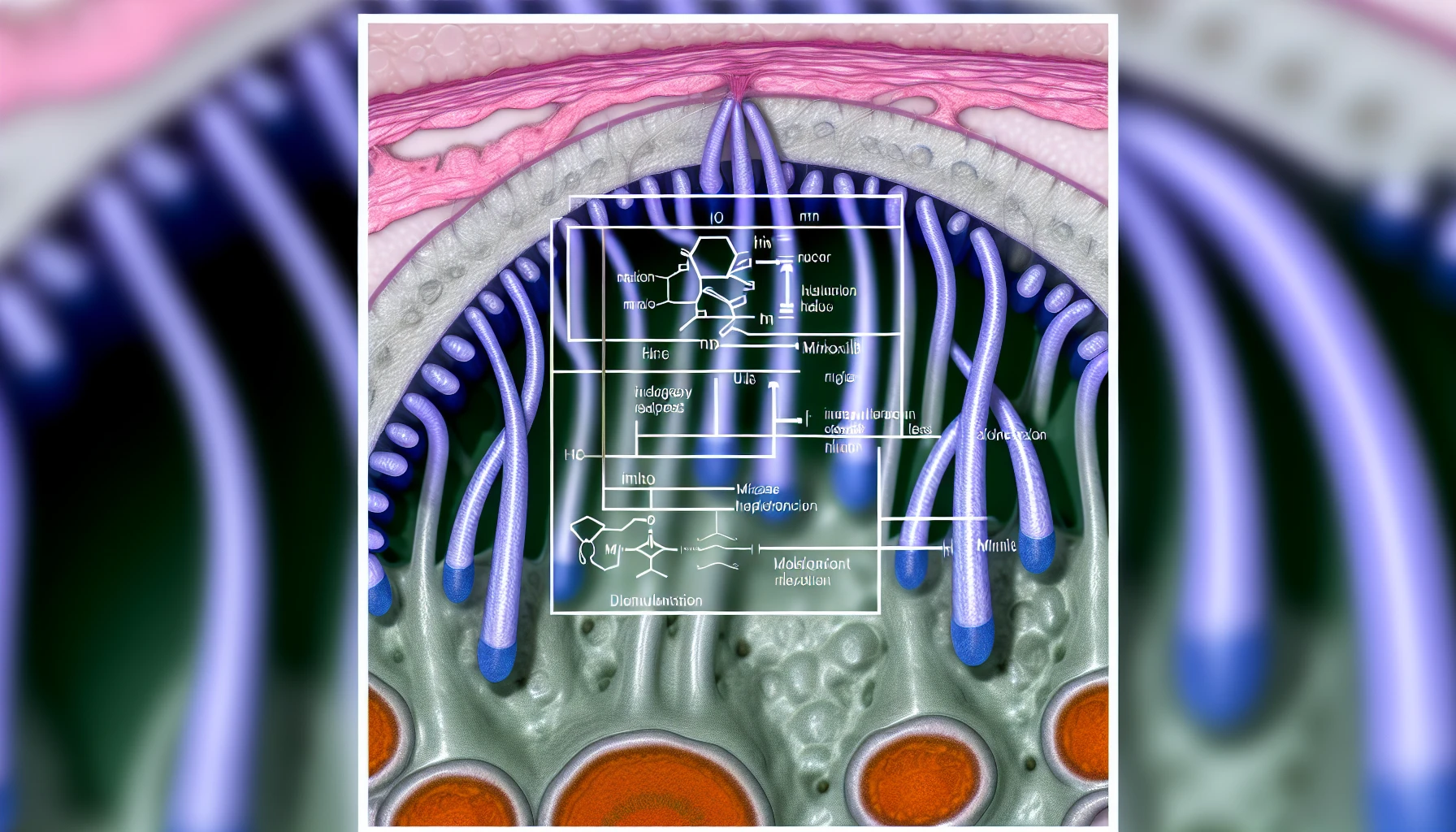
Minoxidil is an over-the-counter topical treatment designed to open hair follicles and promote hair growth. It works by prolonging the growth phase of hair, allowing more hairs to be produced, ultimately increasing the overall thickness and fullness of your hair. Women’s Rogaine 5% Minoxidil Topical Aerosol is an FDA-approved treatment specifically designed for postpartum hair loss, helping women achieve longer-lasting and fuller hair growth.
While minoxidil is primarily known for its hair growth benefits, it was initially developed as a medication for high blood pressure, which led to the discovery of its hair growth promoting properties. Using minoxidil for postpartum hair loss not only addresses hair thinning concerns but can also provide additional benefits such as reduced skin irritations and lower blood pressure.
Understanding the science behind minoxidil enables you to make an educated choice about whether it’s the right treatment for your postpartum hair loss.
Evaluating Minoxidil’s Effectiveness for Postpartum Shedding
Minoxidil’s effectiveness in addressing postpartum hair shedding is evident through the numerous success stories and positive results reported by users. Women who have used products such as DualGen-15 With PG Plus or DualGen-5 NO PG have experienced remarkable hair regrowth, improved hair thickness, and reduced hair shedding.
One user shared her excitement about the results, stating, “I’m thrilled to report that my hair has become much fuller since using Dualgen-15 With PG Plus, and I’m even seeing new growth in the front area and hairline”. These testimonials demonstrate the potential of minoxidil in treating postpartum hair shedding and restoring hair to its pre-pregnancy state.
Application and Safety: Using Minoxidil After Childbirth
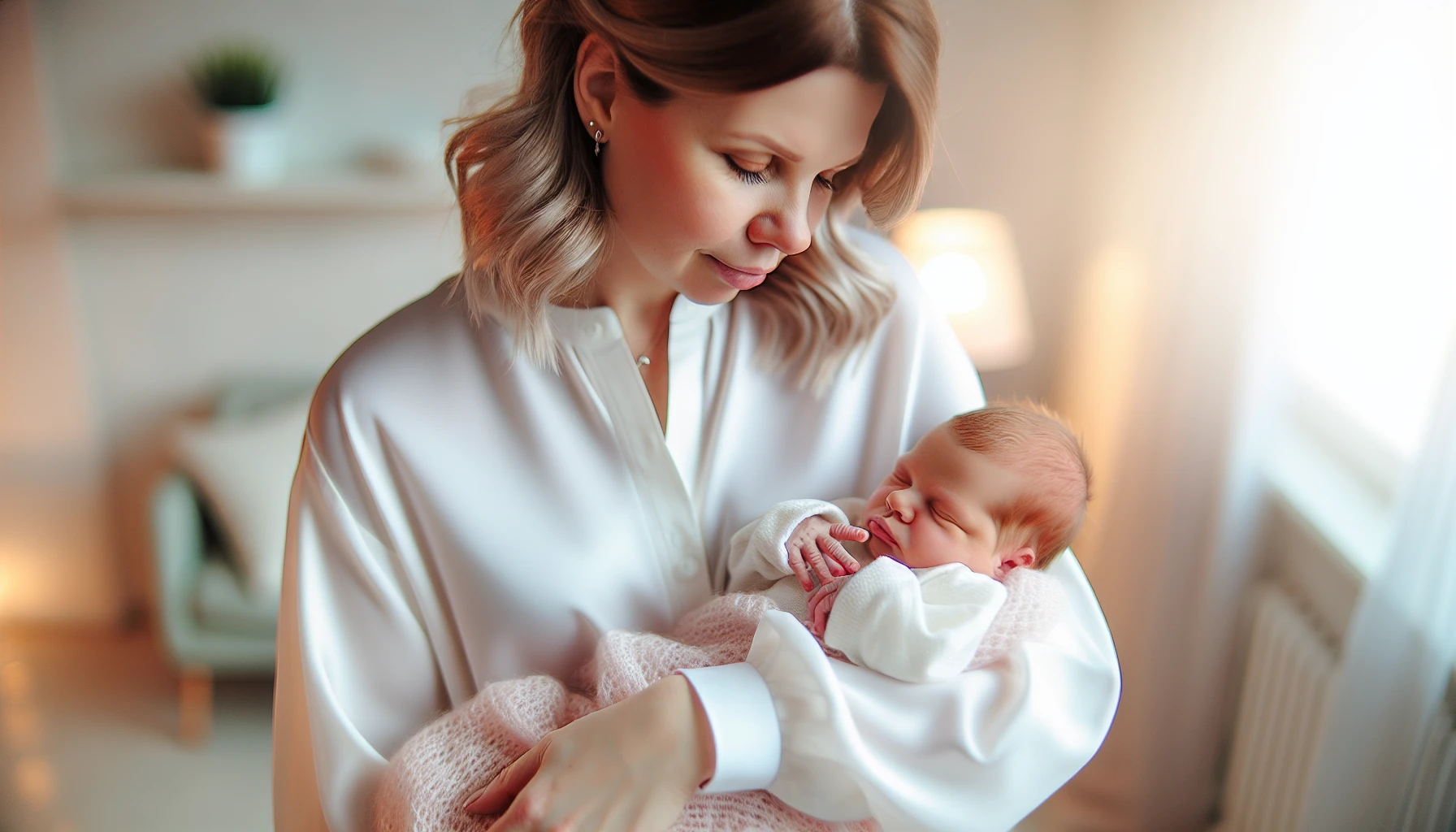
To maximize the benefits of your minoxidil treatment, it’s beneficial to understand when to start using it, the correct application method, and be aware of potential side effects.
The following sections will provide you with comprehensive information on using minoxidil after childbirth safely and effectively.
When to Start Minoxidil Postpartum
The ideal time to start using minoxidil postpartum varies for each individual. While there is no specific waiting period, it is highly recommended to consult with a healthcare provider before using minoxidil after childbirth, especially if you’re breastfeeding. Your healthcare professional can provide personalized advice on the best time to begin treatment and ensure that it is safe for both you and your baby.
Initiating minoxidil treatment within the first three months after childbirth may lead to optimal results in treating postpartum hair loss. It’s important to be patient and consistent, as results can take a few months to become noticeable. With proper timing and dedication, minoxidil can help you regain your pre-pregnancy hair.
How to Apply Minoxidil for Optimal Results
Applying minoxidil correctly can significantly impact its effectiveness in treating postpartum hair loss. To apply the solution, follow these steps:
Part your hair within the thinning area.
Use the dropper to gradually release the solution onto your scalp.
Apply a small amount at a time, using your fingers to spread it over the hair loss area.
Finish by giving the scalp a gentle massage to ensure proper distribution.
After applying minoxidil, it’s important to wash your hands thoroughly to avoid any accidental transfer of the solution to other parts of your body. Adhering to these application techniques can enhance the benefits of minoxidil and achieve optimal results in the treatment of your postpartum hair loss.
Side Effects and Precautions
While minoxidil is a popular and effective treatment for postpartum hair loss, it’s essential to be aware of potential side effects and precautions. Common side effects include:
Acne at the site of application
Scalp burning
Facial hair growth
Increased hair loss
Inflammation or soreness at the root of the hair
Reddened skin
Staying well-informed about these potential side effects allows you to take appropriate precautions and carefully monitor your progress while using minoxidil.
It’s important to consult a healthcare professional before using minoxidil, especially if you’re breastfeeding. Your healthcare provider can help you determine if minoxidil is the right choice for your postpartum hair loss, taking into account potential risks and benefits. Following professional guidance and remaining alert to side effects enables safe and effective use of minoxidil for postpartum hair loss treatment.
Alternatives to Minoxidil for Postpartum Hair Regrowth

If you’re hesitant to try minoxidil or are looking for additional treatments to complement your hair regrowth journey, there are alternative options to consider that can stimulate hair growth.
The following sections will explore nutritional support for hair health, gentle hair care practices, and the hair growth cycle that can promote postpartum hair regrowth.
Nutritional Support for Hair Health
Nutrition plays a vital role in supporting hair health and regrowth after childbirth. Here are some tips to optimize your hair health and promote healthy hair growth:
Consume a diet rich in fruits and vegetables.
Make sure to get enough iron, zinc, B vitamins, and vitamin D.
Prenatal vitamins can be an excellent source of these essential nutrients and can be taken before, during, and after pregnancy to ensure optimal hair health.
To ensure your nutrient needs are met for a healthier pregnancy and postpartum experience, it’s advisable to consult with a healthcare professional or registered dietitian. By prioritizing proper nutrition, you can give your hair the nourishment it needs to thrive during and after pregnancy.
Gentle Hair Care Practices
In addition to nutrition, adopting gentle hair care practices can significantly contribute to postpartum hair recovery and postpartum hair loss stop. Simple actions such as avoiding tight hairstyles, being gentle with wet hair, and using the cool setting when blow-drying your hair can help prevent postpartum hair loss and promote regrowth when postpartum hair loss happen. Understanding how long postpartum hair loss last can also be helpful in managing expectations and adjusting your hair care routine accordingly, especially as postpartum hair loss start can vary for each individual.
You can also explore hair care products specifically designed to support hair health, such as the OGX Nourishing Coconut Milk Anti-Breakage Serum. This serum contains nourishing ingredients like coconut oil and vitamin E, which work together to hydrate and strengthen your hair, ultimately improving its overall health and appearance. By incorporating both nutritional support and gentle hair care practices, you can promote postpartum hair recovery and enjoy healthier, fuller hair.
Combining Treatments for Enhanced Hair Recovery
For optimal postpartum hair recovery, consider a multi-faceted approach that includes:
Minoxidil: a topical medication that can reduce shedding and promote regrowth
Nutritional support: ensuring you have a balanced diet with essential vitamins and minerals for healthy hair growth
Gentle hair care practices: avoiding harsh chemicals, heat styling, and tight hairstyles that can further damage your hair
Using multiple treatments together can reduce shedding, promote regrowth, and give you the best chance of achieving your desired outcome. Additionally, combining treatments can lower the risk of side effects, as individual treatments can be used at lower doses.
Before combining treatments, it’s advisable to consult with a healthcare professional to verify the safety and effectiveness of the treatments. By customizing your hair care regimen to include various treatments, you enhance your chances of overcoming postpartum hair loss and regaining your pre-pregnancy hair.
FAQs

Here are some frequently asked questions about minoxidil and postpartum hair loss that can help you make an informed decision about your hair care journey.
Question: What is the recommended dosage of minoxidil for postpartum hair loss? Answer: The recommended dosage is typically 5 mg twice daily, but it’s best to consult with a healthcare professional for personalized instructions.
Question: How long should one use minoxidil to treat postpartum hair loss? Answer: Results can take a few months to become noticeable, so consistent use is key.
Question: What are the potential benefits of using minoxidil for postpartum hair loss? Answer: Benefits may include acne reduction, scalp soothing, facial hair growth, increased hair retention, and root of the hair strengthening.
Question: What can I expect from using Women’s Rogaine 5% Minoxidil Topical Aerosol for postpartum hair loss? Answer: You can look forward to seeing results within 4-6 months.
Question: Is it safe to use minoxidil while breastfeeding? Answer: Minoxidil is believed to pose low risk to older, full-term breastfed infants, but it’s best to consult a healthcare professional before using it while breastfeeding.
Summary
In conclusion, minoxidil offers a promising solution for those battling postpartum hair loss. By understanding how it works, seeking expert advice, and incorporating it with alternative treatments such as proper nutrition and gentle hair care practices, you can maximize your chances of regaining your pre-pregnancy hair. Remember that patience and consistency are key, and always consult with a healthcare professional before starting any new treatment. Embrace the journey to healthier, fuller hair and rediscover your confidence.
Frequently Asked Questions
Can I use minoxidil for postpartum?
It is not recommended to use Minoxidil while breastfeeding or postpartum, as it can be excreted into breast milk and cause side effects for the baby.
What is best for postpartum hair loss?
The best way to combat postpartum hair loss is to choose a volumizing shampoo and conditioner, maintain a healthy and balanced diet, and be patient – new hair growth will eventually replace the shed hair.
Are there any side effects associated with using minoxidil for postpartum hair loss?
Yes, there are potential side effects associated with using minoxidil for postpartum hair loss, such as acne, burning, facial hair growth, and increased hair loss.
What are some alternative treatments for postpartum hair regrowth?
Nutrition and gentle hair care are great alternatives to promote postpartum hair regrowth. Consider adjusting your diet and switching to milder products for a healthier hair recovery.
How can I take care of my hair during and after pregnancy to minimize postpartum hair loss?
Taking care of your hair during and after pregnancy is key for preventing postpartum hair loss. Ensure you are taking prenatal vitamins, reducing stress, eating a nutritious diet, avoiding tight hairstyles, and being gentle with wet hair for the best results.
